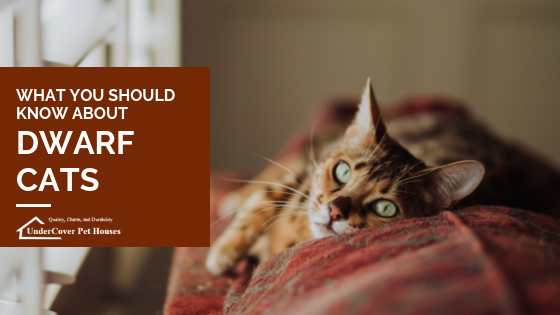 Loading... Please wait...
Loading... Please wait...What You Should Know About Dwarf Cats
Posted by Danny MacDonald on 2018 Oct 6th

From the adorable snapshots of Lil BUB to the funny memes of Grumpy Cat, dwarf cats have taken social media by storm. With their striking appearance and lovable expressions, they've gained fans and friends around the world. How do dwarf cats get their unusual appearance? Let's find out...
Here's what you should know about dwarf cats.
Dwarf kitties get their tiny size and unusual appearance from 3 main types of dwarfism: pituitary dwarfism, osteochondrodysplasia, and selective dwarfism.
Pituitary Dwarfism
As you might guess, this condition occurs when a cat's pituitary gland does not produce enough growth hormones. According to Catster, "this can be caused by an underdeveloped pituitary gland, cysts on the pituitary, or tumors or infectious diseases that directly affect the gland." Kittens with pituitary dwarfism usually mature more slowly than their peers. Unlike other dwarf kitties, they have proportionate heads and bodies. Sadly, cats with this condition have a shorter life span because it affects their organs.
Worried that your kitten is growing too slowly? A simple blood test can determine if she has pituitary dwarfism or congenital hypothyroidism. This test will measure the level of insulin growth factor, or IGF-1. Just take your cat to the vet, and get her checked out!
Shopping for the best cat houses? Check out our wide selection at UnderCover Pet Houses!
Osteochondrodysplasia
Kitties with this form of dwarfism will have a normal-sized body but extremely short legs. They will also have a larger head, smaller jaw, thick joints, and possible spinal issues. Osteochondrodysplasia is a hereditary disease caused by a genetic mutation. Unfortunately, this disease can lead to many serious health issues such as mobility problems, heart and lung issues, and neurological problems.
If your cat has this condition, she will need close supervision by a veterinarian. While some cats are mildly affected, others will face chronic joint inflammation and pain. To help improve your cat's quality of life, a vet may prescribe low-risk medications, supplements, and low-dose radiation treatments.
Selective Dwarfism
Unlike the others, cats with selective dwarfism don't have a disease. They have just been bred for the genetic mutation that causes short legs. The cat breeds of Munchkins and Minskins are examples of selective dwarfism. Because of their short legs, these kitties have a greater risk of arthritis.
Dwarf cat breeds are the subject of much controversy, and, outside North America, they have not been widely accepted. They generally have more health problems and lower quality of life than average-sized cats.
Because of their smaller size and abnormal bone structure, dwarf cats tend toward obesity. In addition, they will most likely require pain medication and special health care.
Let's Chat:
Do you know any dwarf cats, or do you own a dwarf cat? Share your experience and/or photos of dwarf cats in the comment section!
Looking for an outdoor cat house? Find the perfect one at www.undercoverpethouses.com!
